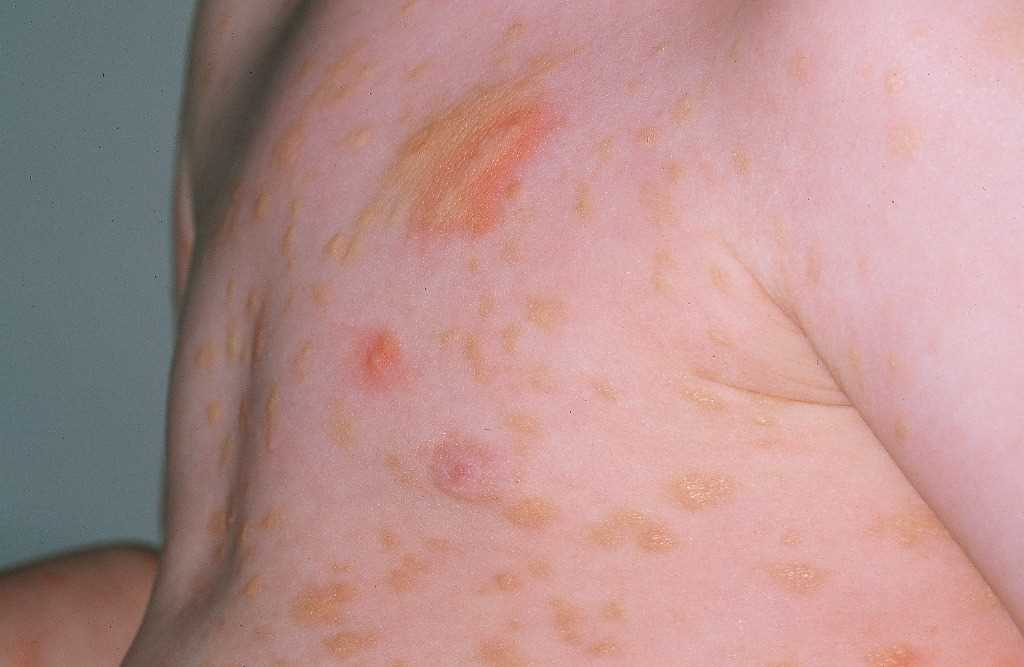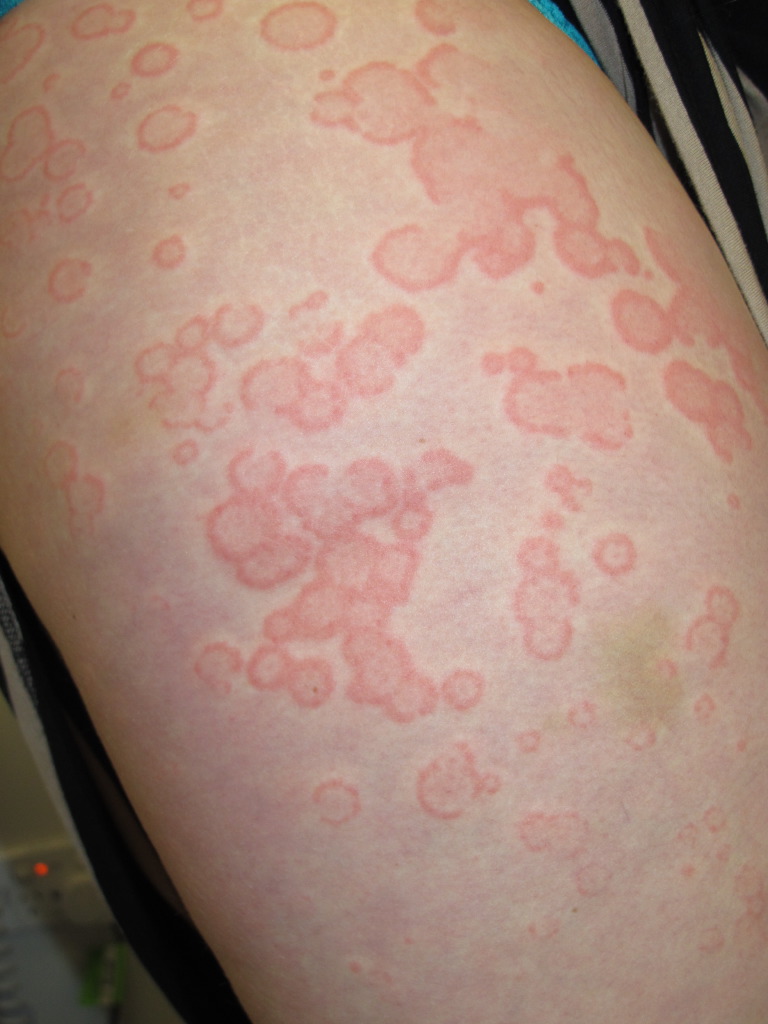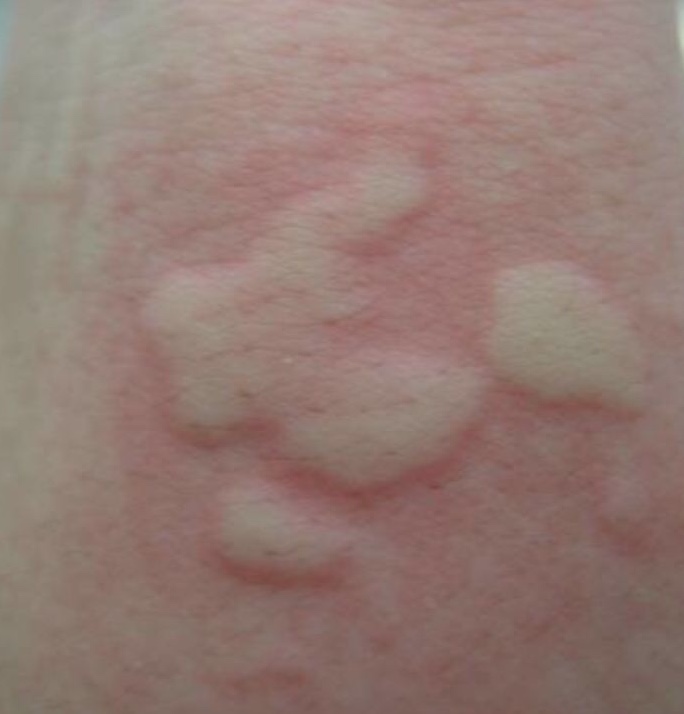[1]
Zuberbier T, Aberer W, Asero R, Abdul Latiff AH, Baker D, Ballmer-Weber B, Bernstein JA, Bindslev-Jensen C, Brzoza Z, Buense Bedrikow R, Canonica GW, Church MK, Craig T, Danilycheva IV, Dressler C, Ensina LF, Giménez-Arnau A, Godse K, Gonçalo M, Grattan C, Hebert J, Hide M, Kaplan A, Kapp A, Katelaris CH, Kocatürk E, Kulthanan K, Larenas-Linnemann D, Leslie TA, Magerl M, Mathelier-Fusade P, Meshkova RY, Metz M, Nast A, Nettis E, Oude-Elberink H, Rosumeck S, Saini SS, Sánchez-Borges M, Schmid-Grendelmeier P, Staubach P, Sussman G, Toubi E, Vena GA, Vestergaard C, Wedi B, Werner RN, Zhao Z, Maurer M, Endorsed by the following societies: AAAAI, AAD, AAIITO, ACAAI, AEDV, APAAACI, ASBAI, ASCIA, BAD, BSACI, CDA, CMICA, CSACI, DDG, DDS, DGAKI, DSA, DST, EAACI, EIAS, EDF, EMBRN, ESCD, GA²LEN, IAACI, IADVL, JDA, NVvA, MSAI, ÖGDV, PSA, RAACI, SBD, SFD, SGAI, SGDV, SIAAIC, SIDeMaST, SPDV, TSD, UNBB, UNEV and WAO. The EAACI/GA²LEN/EDF/WAO guideline for the definition, classification, diagnosis and management of urticaria. Allergy. 2018 Jul:73(7):1393-1414. doi: 10.1111/all.13397. Epub
[PubMed PMID: 29336054]
[2]
Konstantinou GN, Asero R, Ferrer M, Knol EF, Maurer M, Raap U, Schmid-Grendelmeier P, Skov PS, Grattan CE. EAACI taskforce position paper: evidence for autoimmune urticaria and proposal for defining diagnostic criteria. Allergy. 2013 Jan:68(1):27-36. doi: 10.1111/all.12056. Epub 2012 Nov 15
[PubMed PMID: 23157716]
[3]
Sabroe RA, Grattan CE, Francis DM, Barr RM, Kobza Black A, Greaves MW. The autologous serum skin test: a screening test for autoantibodies in chronic idiopathic urticaria. The British journal of dermatology. 1999 Mar:140(3):446-52
[PubMed PMID: 10233264]
[4]
Confino-Cohen R, Chodick G, Shalev V, Leshno M, Kimhi O, Goldberg A. Chronic urticaria and autoimmunity: associations found in a large population study. The Journal of allergy and clinical immunology. 2012 May:129(5):1307-13. doi: 10.1016/j.jaci.2012.01.043. Epub 2012 Feb 14
[PubMed PMID: 22336078]
[5]
Wedi B, Raap U, Kapp A. Chronic urticaria and infections. Current opinion in allergy and clinical immunology. 2004 Oct:4(5):387-96
[PubMed PMID: 15349038]
Level 3 (low-level) evidence
[6]
Hsu ML, Li LF. Prevalence of food avoidance and food allergy in Chinese patients with chronic urticaria. The British journal of dermatology. 2012 Apr:166(4):747-52. doi: 10.1111/j.1365-2133.2011.10733.x. Epub 2012 Mar 2
[PubMed PMID: 22092280]
[7]
Lindelöf B, Sigurgeirsson B, Wahlgren CF, Eklund G. Chronic urticaria and cancer: an epidemiological study of 1155 patients. The British journal of dermatology. 1990 Oct:123(4):453-6
[PubMed PMID: 2095176]
Level 2 (mid-level) evidence
[8]
Chen YJ, Wu CY, Shen JL, Chen TT, Chang YT. Cancer risk in patients with chronic urticaria: a population-based cohort study. Archives of dermatology. 2012 Jan:148(1):103-8. doi: 10.1001/archdermatol.2011.682. Epub
[PubMed PMID: 22250240]
[9]
Wertenteil S, Strunk A, Garg A. Prevalence estimates for chronic urticaria in the United States: A sex- and age-adjusted population analysis. Journal of the American Academy of Dermatology. 2019 Jul:81(1):152-156. doi: 10.1016/j.jaad.2019.02.064. Epub 2019 Mar 11
[PubMed PMID: 30872154]
[10]
Lee SJ, Ha EK, Jee HM, Lee KS, Lee SW, Kim MA, Kim DH, Jung YH, Sheen YH, Sung MS, Han MY. Prevalence and Risk Factors of Urticaria With a Focus on Chronic Urticaria in Children. Allergy, asthma & immunology research. 2017 May:9(3):212-219. doi: 10.4168/aair.2017.9.3.212. Epub
[PubMed PMID: 28293927]
[11]
Hennino A, Bérard F, Guillot I, Saad N, Rozières A, Nicolas JF. Pathophysiology of urticaria. Clinical reviews in allergy & immunology. 2006 Feb:30(1):3-11
[PubMed PMID: 16461989]
[12]
Antia C, Baquerizo K, Korman A, Bernstein JA, Alikhan A. Urticaria: A comprehensive review: Epidemiology, diagnosis, and work-up. Journal of the American Academy of Dermatology. 2018 Oct:79(4):599-614. doi: 10.1016/j.jaad.2018.01.020. Epub
[PubMed PMID: 30241623]
[13]
Saini SS, Kaplan AP. Chronic Spontaneous Urticaria: The Devil's Itch. The journal of allergy and clinical immunology. In practice. 2018 Jul-Aug:6(4):1097-1106. doi: 10.1016/j.jaip.2018.04.013. Epub
[PubMed PMID: 30033911]
[14]
Kozel MM, Bossuyt PM, Mekkes JR, Bos JD. Laboratory tests and identified diagnoses in patients with physical and chronic urticaria and angioedema: A systematic review. Journal of the American Academy of Dermatology. 2003 Mar:48(3):409-16
[PubMed PMID: 12637921]
Level 1 (high-level) evidence
[15]
Augey F, Gunera-Saad N, Bensaid B, Nosbaum A, Berard F, Nicolas JF. Chronic spontaneous urticaria is not an allergic disease. European journal of dermatology : EJD. 2011 May-Jun:21(3):349-53. doi: 10.1684/ejd.2011.1285. Epub
[PubMed PMID: 21616748]
[16]
Konstantinou GN, Asero R, Maurer M, Sabroe RA, Schmid-Grendelmeier P, Grattan CE. EAACI/GA(2)LEN task force consensus report: the autologous serum skin test in urticaria. Allergy. 2009 Sep:64(9):1256-68. doi: 10.1111/j.1398-9995.2009.02132.x. Epub 2009 Jul 24
[PubMed PMID: 19650847]
Level 3 (low-level) evidence
[17]
El-Sharkawy REE, Abd-Elmaged WM, Ahmed DA, Abdel-Wahed SAE. Pattern of chronic urticaria and value of autologous serum skin test in Sohag Province, Upper Egypt. Electronic physician. 2018 May:10(5):6781-6788. doi: 10.19082/6781. Epub 2018 May 5
[PubMed PMID: 29997762]
[18]
Kaplan A, Ledford D, Ashby M, Canvin J, Zazzali JL, Conner E, Veith J, Kamath N, Staubach P, Jakob T, Stirling RG, Kuna P, Berger W, Maurer M, Rosén K. Omalizumab in patients with symptomatic chronic idiopathic/spontaneous urticaria despite standard combination therapy. The Journal of allergy and clinical immunology. 2013 Jul:132(1):101-9. doi: 10.1016/j.jaci.2013.05.013. Epub
[PubMed PMID: 23810097]
[19]
Kulthanan K, Chaweekulrat P, Komoltri C, Hunnangkul S, Tuchinda P, Chularojanamontri L, Maurer M. Cyclosporine for Chronic Spontaneous Urticaria: A Meta-Analysis and Systematic Review. The journal of allergy and clinical immunology. In practice. 2018 Mar-Apr:6(2):586-599. doi: 10.1016/j.jaip.2017.07.017. Epub 2017 Sep 12
[PubMed PMID: 28916431]
Level 1 (high-level) evidence
[20]
Ellingsen AR, Thestrup-Pedersen K. Treatment of chronic idiopathic urticaria with topical steroids. An open trial. Acta dermato-venereologica. 1996 Jan:76(1):43-4
[PubMed PMID: 8721491]
[21]
Champion RH, Roberts SO, Carpenter RG, Roger JH. Urticaria and angio-oedema. A review of 554 patients. The British journal of dermatology. 1969 Aug:81(8):588-97
[PubMed PMID: 5801331]
[22]
Gaig P, Olona M, Muñoz Lejarazu D, Caballero MT, Domínguez FJ, Echechipia S, García Abujeta JL, Gonzalo MA, Lleonart R, Martínez Cócera C, Rodríguez A, Ferrer M. Epidemiology of urticaria in Spain. Journal of investigational allergology & clinical immunology. 2004:14(3):214-20
[PubMed PMID: 15552715]
[23]
Toubi E, Kessel A, Avshovich N, Bamberger E, Sabo E, Nusem D, Panasoff J. Clinical and laboratory parameters in predicting chronic urticaria duration: a prospective study of 139 patients. Allergy. 2004 Aug:59(8):869-73
[PubMed PMID: 15230821]
[24]
Kulthanan K, Jiamton S, Thumpimukvatana N, Pinkaew S. Chronic idiopathic urticaria: prevalence and clinical course. The Journal of dermatology. 2007 May:34(5):294-301
[PubMed PMID: 17408437]
[25]
O'Donnell BF, Lawlor F, Simpson J, Morgan M, Greaves MW. The impact of chronic urticaria on the quality of life. The British journal of dermatology. 1997 Feb:136(2):197-201
[PubMed PMID: 9068731]
Level 2 (mid-level) evidence
[26]
Grattan CE. Aspirin sensitivity and urticaria. Clinical and experimental dermatology. 2003 Mar:28(2):123-7
[PubMed PMID: 12653694]
[27]
Berrino AM, Voltolini S, Fiaschi D, Pellegrini S, Bignardi D, Minale P, Troise C, Maura E. Chronic urticaria: importance of a medical-psychological approach. European annals of allergy and clinical immunology. 2006 May:38(5):149-52
[PubMed PMID: 17058846]



